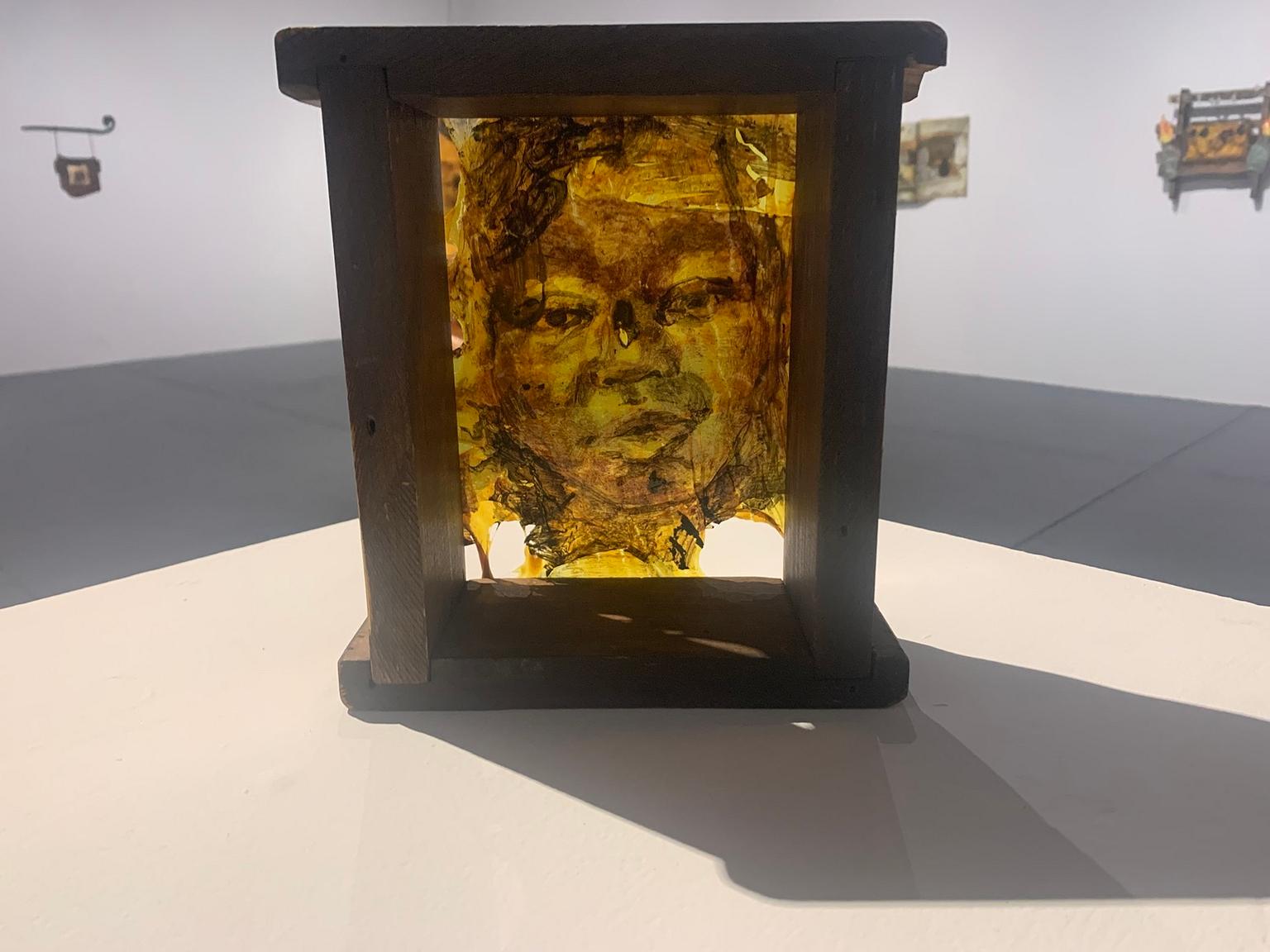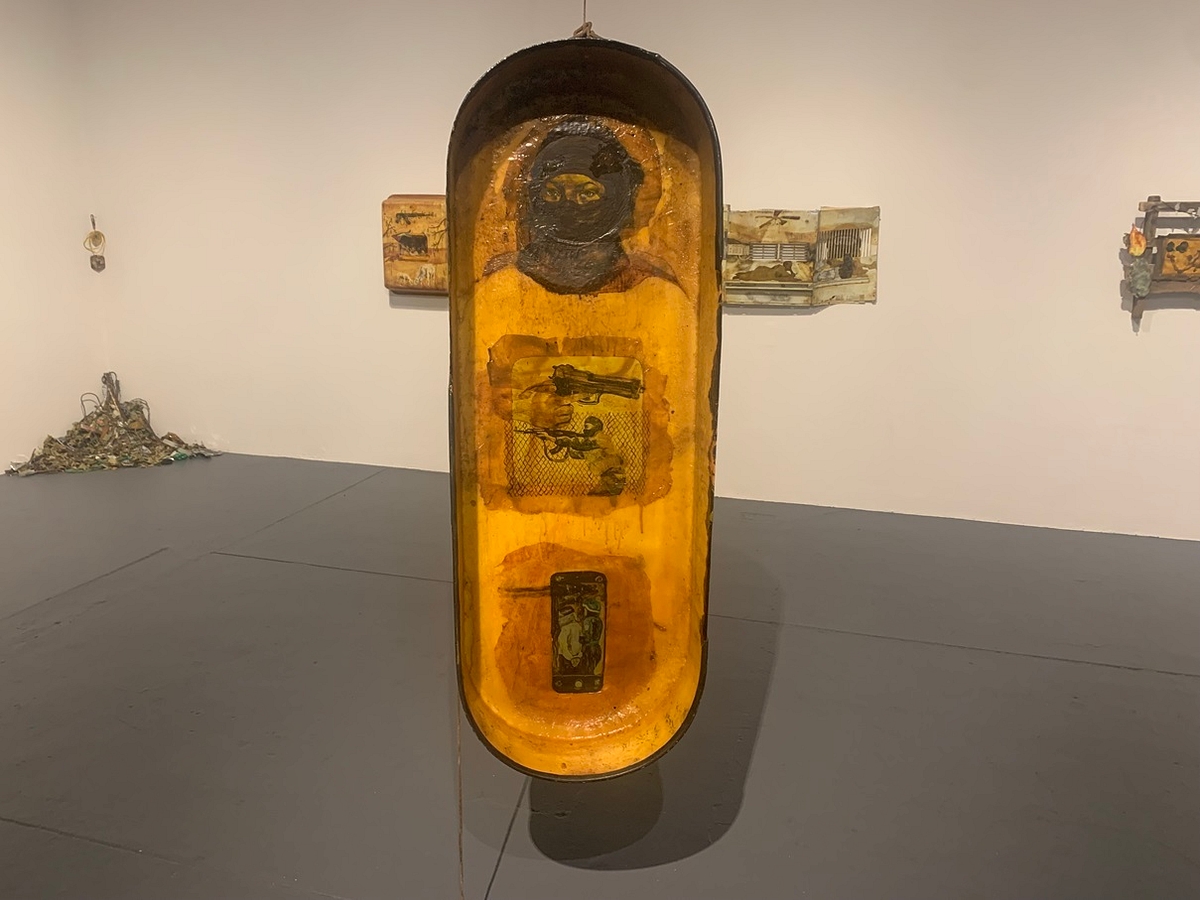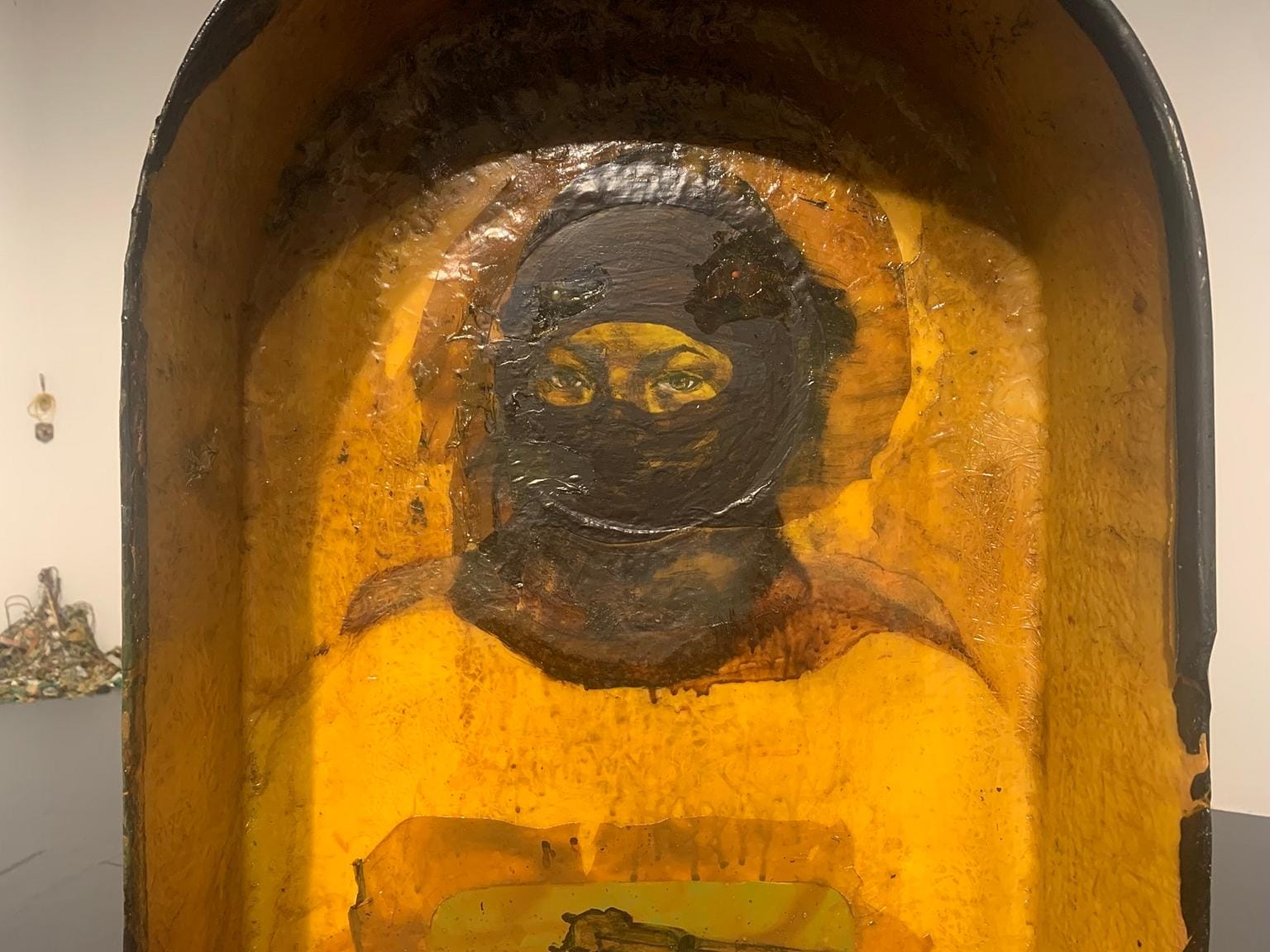Common Property: Sun Washed Waste of The West
Real Art Ways
Hartford
Sept. 10, 2024
Sophia-Yemisi Adeyemo’s work is described as existing “at the intersection of assemblage, painting, and sculpture. [The artist] pulls from the visual sensibilities of graffiti, protest art, Cuban solidarity posters, hand-drawn shop signs, and non-canonized African-diasporic storytelling sensibilities (so-called “naive” art) as a means of contributing to a lineage of opposition.”
That’s certainly a mouthful. But what does it mean? Opposition to whom?
As I looked at the work on display at the current Real Art Ways exhibit, I felt less that the various pieces were standing against something, and more that they existed as melancholic reminders that all of these objects are part of our planet’s circle of life too.
The title “Sun Washed Waste of The West” evoked an idea about things that are no longer useful being put to purpose. But there’s a certain human arrogance in that idea itself, as if humans can declare a tree to be waste simply because we put it in the form of a toothpick.

All of the pieces seemed to harbor a shadow of humanity within them, at times quite literally. One such example was the piece known as Untitled (Skin), where the faint outline of a face made with acrylic paint seems to haunt a piece of found wood. It’s perhaps the thesis of what I was thinking as I observed the gallery; the artist’s work revealed the humanity within. After all, it’s all the same stuff — stardust that’s been repackaged, reworked, repurposed.

Thought, History & Presence seemed to capture the theme of opposition more directly. There’s no greater symbol of violence, which felt like a synonym for opposition in the gallery, than a gun. Even the image of the woman, with her entire face covered save for her eyes, can be interpreted either as revolutionary or religious. But there is no such room for interpretation with the gun. They are made to kill people, a fact we’re reminded of almost weekly in our children’s schools.
But even in our violence, we find ourselves as fellow travelers. War, hatred, anger and jealousy are not unique to us; just because we can’t tell when a pigeon has had it up here doesn’t mean that it doesn’t experience that emotion. But what does a bathtub feel? Does it feel proud that it’s being included in an exhibit instead of spending its existence in a bathroom? Am I anthropomorphizing, and putting my own unique sense of human superiority on display? Maybe it’s not a bathtub at all, that’s just what it looks like to me.

FInally. Spectator Interlude seemed to tie my disparate thoughts together. If we’re talking about opposition and brandishing guns, then ultimately what we’re talking about is death. The exhibit showed both the tools and the politics that fuel death, but relegated death itself as some sort of side to a meal where you can simply say, “Hold the death, I’m good.”
I think the young lady in the image is dead, despite the claim that it’s an interlude for spectators. The exhibit would feel disingenuous otherwise. Yeah, we’ve got the cool looking revolutionaries and the awesome gun, but none of the consequences of those things. And when we die, in hopeless political struggles or sadistic murder machines claiming to be securing our freedom, we will become the raw materials for the next piece of found wood, the next bathtub until things change dramatically. Life bursts from these objects, life that endures for all time because of death, not despite it.
NEXT
Common Property: Sun Washed Waste of The West runs at Real Art Ways through Sept. 23
Jamil goes to check out some music with Asher Kai.






